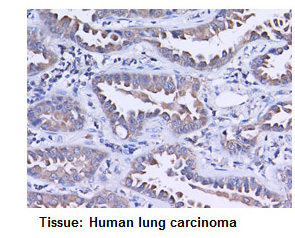Anti-NRF2 mAb
Product Code:
MBL-M200-3
MBL-M200-3
Host Type:
Mouse
Mouse
Antibody Isotype:
IgG1 κ
IgG1 κ
Antibody Clonality:
Monoclonal
Monoclonal
Antibody Clone:
1F2
1F2
Regulatory Status:
RUO
RUO
Target Species:
- Human
- Mouse
- Rat
Applications:
- Immunocytochemistry (ICC)
- Immunohistochemistry (IHC)
- Immunoprecipitation (IP)
- Western Blot (WB)
Shipping:
4°C
4°C
Storage:
-20°C
-20°C
No additional charges, what you see is what you pay! *
| Code | Size | Price |
|---|
| MBL-M200-3 | 100 ul | £335.00 |
Quantity:
Prices exclude any Taxes / VAT






